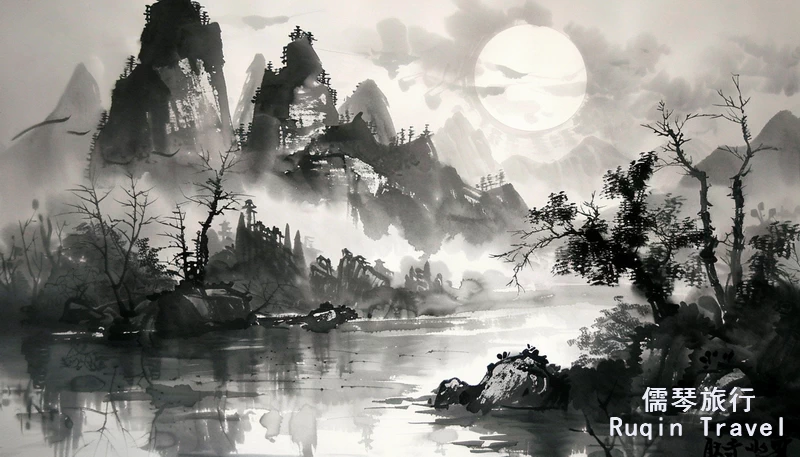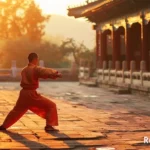Introduction
Welcome to our guide on Chinese brush painting techniques. This guide aims to help foreign travelers understand and appreciate this ancient art form. Whether you are a beginner or an art enthusiast, this article will provide valuable insights and practical tips.
A Brief History of Chinese Brush Painting
Chinese brush painting, also known as ink wash painting, dates back over 2000 years. It evolved during the Han Dynasty and flourished during the Tang and Song Dynasties.
Initially, this art was closely linked to calligraphy. The same brushes and inks were used, which influenced the painting style. Over time, it became a distinct art form, celebrated for its unique techniques and aesthetics.
Essential Tools for Chinese Brush Painting
To start with Chinese brush painting, you need a few essential tools. Firstly, you need brushes. Chinese brushes come in various shapes and sizes. Soft brushes are ideal for smooth strokes, while stiff brushes create more texture.
Secondly, ink is crucial. Traditional Chinese ink is made from soot and animal glue, producing rich, deep blacks. You can also use color inks for a more vibrant look.
Thirdly, you need paper. Rice paper, also known as Xuan paper, is commonly used. It absorbs ink well, allowing for expressive brush strokes. Lastly, an ink stone is used to grind ink sticks and mix with water, producing the desired ink consistency.
Basic Techniques in Chinese Brush Painting
Holding the Brush
Holding the brush correctly is vital. Unlike Western painting, where the brush is held like a pencil, Chinese brush painting requires a different grip.
Hold the brush vertically, using your thumb, index, and middle fingers. This grip allows for greater control and flexibility.
Brush Strokes
There are several basic brush strokes to master. The ‘Bone Stroke’ is used for outlining and defining shapes. The ‘Flying White’ stroke creates a sense of movement and texture. Practicing these strokes will improve your control and precision.
Ink Application
Learning how to apply ink is another essential technique. You can control the darkness and lightness of your strokes by varying the amount of water mixed with the ink. Light ink creates a sense of airiness, while dark ink adds weight and depth.
Traditional Chinese Painting Styles
Chinese brush painting encompasses various styles, each with unique characteristics.
Gongbi (Meticulous Style)
Gongbi is a detailed and realistic style. Artists use fine lines and precise brush strokes to create intricate designs. This style often depicts flowers, birds, and animals.
Xieyi (Freehand Style)
Xieyi is more expressive and abstract. It focuses on capturing the spirit of the subject rather than its precise appearance. This style is characterized by bold, sweeping brush strokes and dynamic compositions.
Landscape Painting
Landscape painting, or Shanshui, is a prominent genre in Chinese art. It depicts mountains, rivers, and natural scenery. This style often combines elements of both Gongbi and Xieyi, creating a harmonious balance between detail and expression.
Step-by-Step Guide to Creating a Chinese Brush Painting
Step 1: Preparing Your Materials
First, gather all your materials. Ensure your brushes, ink, paper, and ink stone are ready. Set up your workspace with good lighting and a comfortable position.
Step 2: Grinding the Ink
Next, grind the ink stick on the ink stone with a bit of water. The grinding process can be meditative. Aim for a smooth, consistent ink mixture.
Step 3: Sketching the Outline
Start by sketching the basic outline of your subject using light brush strokes. Focus on the overall composition and proportions.
Step 4: Adding Details
Once the outline is complete, begin adding details. Use different brush strokes to create texture and depth. Pay attention to the flow of the brush and the amount of ink used.
Step 5: Final Touches
Finally, add any finishing touches. This might include adding color or enhancing certain areas. Allow the painting to dry completely.
Exploring Chinese Brush Painting in China
Art Workshops and Classes
When visiting China, you can take part in various art workshops and classes. Cities like Beijing, Shanghai, and Xi’an offer numerous opportunities to learn from local artists. These workshops provide hands-on experience and personalized instruction, making them an excellent way to deepen your understanding.
Art Museums and Galleries
China boasts many art museums and galleries showcasing traditional and contemporary Chinese brush paintings. The National Art Museum of China in Beijing and the Shanghai Museum are must-visit destinations. These institutions offer a glimpse into the rich history and evolution of Chinese art.
Cultural Festivals
Additionally, attending cultural festivals can enhance your experience. Events like the Beijing International Art Biennale and the China (Shenzhen) International Cultural Industries Fair celebrate Chinese art in all its forms. These festivals provide an opportunity to see live demonstrations and meet artists.
Tips for Beginners
Start Simple
If you are new to Chinese brush painting, start with simple subjects. Flowers, leaves, and bamboo are ideal for beginners. These subjects allow you to practice basic brush strokes and techniques.
Practice Regularly
Regular practice is key to mastering Chinese brush painting. Set aside time each day to practice. Focus on different techniques and styles. Over time, you will see improvement.
Study Masterpieces
Studying masterpieces by renowned artists can provide inspiration and guidance. Pay attention to their brush strokes, composition, and use of ink. Try to replicate their techniques in your practice.
Seek Feedback
Finally, seek feedback from experienced artists. Joining a local art group or taking a class can provide valuable insights. Constructive criticism can help you identify areas for improvement and refine your skills.
Chinese brush painting is a beautiful and expressive art form with a rich history. For foreign travelers, it offers a unique way to connect with Chinese culture.
By understanding the basic techniques and styles, you can appreciate the depth and beauty of this ancient art. Whether you are a beginner or an experienced artist, there is always something new to learn and explore in Chinese brush painting. Enjoy your journey into this fascinating world! Check out China Cultural Insights for more information.




Can you explain the importance of “spontaneity” in Chinese brush painting and how it affects the outcome of a painting?
Hello Manajemen Pemasaran,
The importance of “spontaneity” in Chinese brush painting is reflected in the following aspects:
1. Spontaneity in Chinese Brush Painting
Spontaneity emphasizes the natural flow and improvisation of the artist during the creative process. This is not only reflected in the use of brush and ink but also in the artist’s emotional expression and creative inspiration. Chinese painting values the free and unrestrained use of brush and ink, striving for a state of “intention preceding the brush, charm beyond techniques.” Achieving this state is inseparable from the artist’s spontaneity.
2. How Spontaneity Affects a Painting’s Outcome
Emotional Expression: Spontaneity allows the artist to authentically convey their emotions and inner world during creation. This emotional expression gives the artwork greater vitality and resonance, enabling viewers to feel the artist’s emotional fluctuations and mental state during the creative process.
Brush and Ink Application: Spontaneity makes the use of brush and ink more flexible and dynamic. The artist can adjust brush techniques and ink tones on the fly to suit the needs of the composition, resulting in diverse and rich visual effects. This improvisational use of brush and ink enhances the artwork’s artistic appeal and uniqueness.
Innovation and Integration: Spontaneity encourages bold innovation and experimentation in the creative process. Artists can blend traditional techniques with modern elements to create new artistic styles and forms of expression. This innovation and integration allow Chinese painting to retain its traditional essence while evolving with the times to meet contemporary aesthetic demands.
Conclusion
In summary, spontaneity holds a vital place in Chinese brush painting. It not only shapes the artist’s creative process and emotional expression but also directly impacts the artistic effect and emotional resonance of the work. Through spontaneity, artists can better convey their thoughts and emotions, making their works more vibrant and artistically valuable.